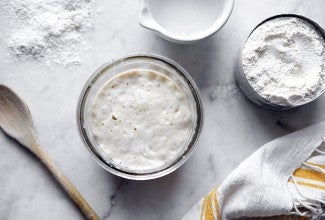How to build the exact amount of ripe sourdough starter for a recipe
Need more starter for a recipe? Here’s what to do.
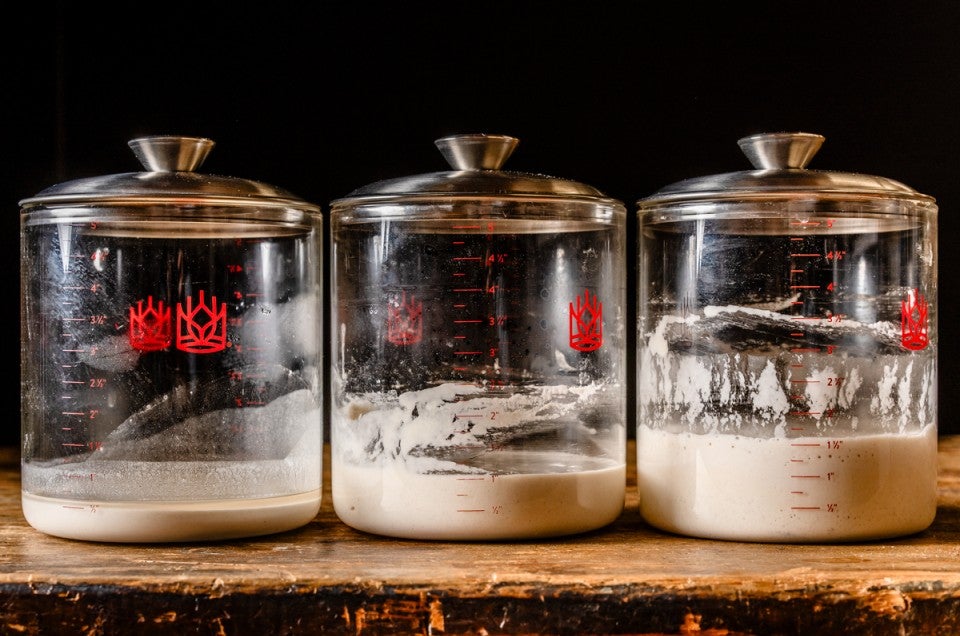

Like any ingredient, the amount of sourdough starter called for in a recipe varies. Some recipes only need about 3 tablespoons (40 grams) of starter; others might call for 1 cup (227 grams) or even 2 cups (454 grams) of starter.
For recipes that call for a large amount of sourdough starter, you typically have to “build up” your starter over the course of several feedings so that, when it comes time to mix your dough, you have 1) enough ripe starter for the recipe and 2) enough starter leftover so that you can continue to feed and maintain it for future bread baking.
Here’s how — and why — to build up your sourdough starter.
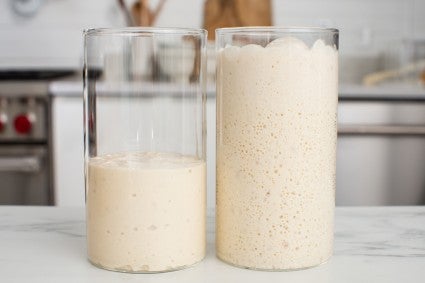
Many sourdough bread recipes call for “ripe sourdough starter.” This refers to starter that is ready to be used for baking: It has been recently fed and then doubled or tripled in volume and then slowed down in activity. It’s at this point that you want to mix your bread dough.
The timing will be different depending on your sourdough starter and conditions, but generally, this occurs roughly six to eight hours after being fed. Starter that is under-ripe has not yet doubled in size, and starter that is over-ripe has doubled or tripled in size and then started to sink again. There is a range of ripeness in between, and that is the zone you are looking for to get the best results in your recipe. See more: Ripe sourdough starter: Here's what that means.
If your starter is maintained at room temperature: If you keep your starter room temp, you may be just one feed away from ripe starter. A day or so before you plan to bake with it, start feeding your room temperature starter twice a day (spacing the feeds about 12 hours apart) to raise its activity level; it should double or triple in volume within six to eight hours.
If your starter has been stored in the refrigerator: It’s going to be sluggish, and you’ll need to raise its activity to a more energetic level before using it. About two days before you’re planning to bake, take the starter out of the refrigerator in the evening, feed it like you normally would, and let it stand, covered and at room temperature, for 12 hours. (Whether this is one day or six days after your regular weekly feeding, it doesn’t matter; the process is the same.) The next day feed it twice, once in the morning, then again about 12 hours later. The last feeding should take place six to 12 hours before you start your recipe, so it has time to become ripe.
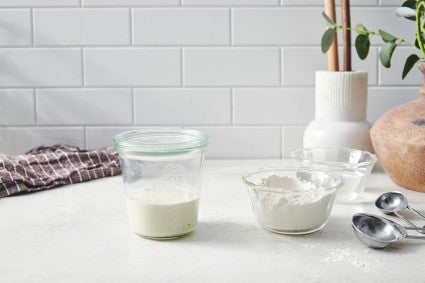
Let’s say you want to bake Rustic Sourdough Bread, but the recipe calls for 227 grams ripe starter and you only keep 100 grams of starter. You need more starter before you can make your dough! You’ll need 227 grams of ripe starter, plus enough left over to feed and put back in the fridge. You should also count on losing some starter to what gets stuck in your bowl and on your tools, so round up to 300 grams of starter.
Thankfully, it’s easy to build up your starter. Here are two options.
To increase the quantity of your starter for a large recipe (or to make multiple recipes at once), one option is to feed the starter without discarding any. (Week to week we discard to keep our starter from getting too big, but now we want to make it bigger!) Give it a couple of feedings without discarding — for instance, 100 grams starter + 100 grams flour + 100 grams water = 300 grams starter. You now have enough to make your recipe and have some leftover!
Once the starter is ripe, about six to eight hours after feeding, remove 227 grams to use in your recipe. Take 50 grams from the remaining starter and feed with 50 grams flour and 50 grams water; maintain for future baking.
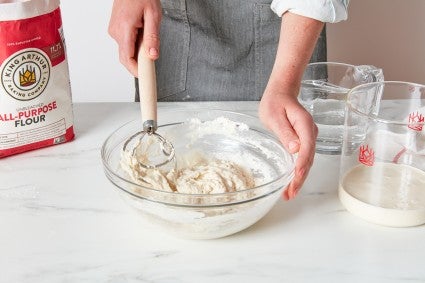
You may also increase the volume of starter by increasing the amount of flour and water you add at each feeding. Just remember to follow the 1:1 ratio of equal parts (by weight) flour and water for your feedings.
For example, if you want to bake Rustic Sourdough Bread on Sunday, you need 300 grams of ripe starter on Sunday morning. (Remember: 227 grams for the recipe; 50 grams leftover; and some excess starter stuck to bowls and utensils.) Here’s how you get there:
Want more sourdough tips? Dive into our guide on How to Bake Sourdough, which includes technique videos, frequently asked questions, and expert advice.
